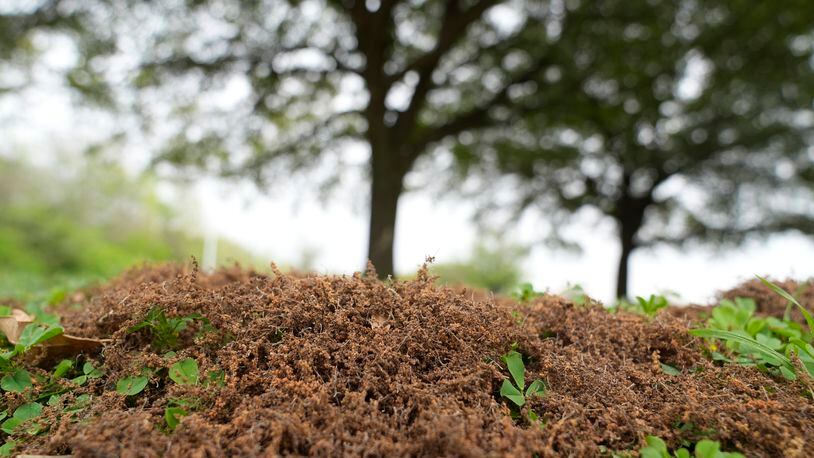Oak, mulberry and maple trees are among the top tree allergens in the Dayton region, according to Pollen.com, which is forecasting high or medium-high levels of pollen over the next five days.
“Typically you start seeing it in March, early March,” Huxtable said about tree pollen allergens. Sometimes tree pollen can start emerging in February if there is warmer weather.
“It’ll peak sometime right about now, sometime in April, and then it should die down going into May,” Huxtable said.
Grass pollen will start to pick up in May and June following the end of tree pollen season, he said.
“Then starting in August is when you’ll see ragweed, which tends to peak around Labor Day,” Huxtable said.
For people with allergies, if they’re suffering right now, they should consult a health provider, he said.
“If you’re symptomatic, you should get treatment,” Huxtable said.
Credit: JIM NOELKER
Credit: JIM NOELKER
Allergy sufferers should avoid being outside or doing yard work. If yard work can’t be avoided, Huxtable said people should clean off once their done outside, changing clothes and washing up to remove the tree pollen.
Doctors have been seeing increasing numbers of patients with symptoms that could be related to allergies.
“Recently in the last couple weeks, we’re seeing more people coming in with some symptoms of nasal congestion, runny nose, sinus pressure, headaches that people aren’t sure if that’s related to colds or sinus infections or allergies,” said Dr. David Buck, a physician at Premier Health Primary Care - Xenia.
Allergies are among the most common conditions impacting children, researchers say. In the U.S., nearly one in three adults and more than one in four children have a seasonal allergy, eczema or food allergy, according to the Asthma and Allergy Foundation of America.
Allergies also present an economic burden, costing Americans being between $3 billion and $4 billion annually, according to the foundation.
There are over-the-counter remedies, such as steroid nasal sprays and non-drowsy antihistamines like Claritin or Zyrtec, Buck said. There are also intranasal antihistamine sprays like Astepro available without a prescription.
For those still suffering after seeking over-the-counter help, there are prescription options, which patients can talk to their doctors about.
“Sometimes they will get oral steriods or sometimes they will get a shot of steriods to try to last them through the allergy season,” Buck said.
Allergy sufferers can try to limit their triggers, take medication ahead of time if they know they’re going to have to be outside or take showers once they get inside to remove the pollen to reduce their exposure to pollen, he said.
“Be proactive,” Buck said. “It does account for a lot of missed school days and missed work days.”
Seasonal allergy symptoms can be confusing sometimes with patients wondering if the symptoms are allergy-related, a cold or COVID.
“If symptoms are lingering on a little bit, affecting people five to seven days or more than seven days, at that particular point, they may want to see their health care provider,” Buck said.
Credit: Bill Lackey
Credit: Bill Lackey
About the Author
